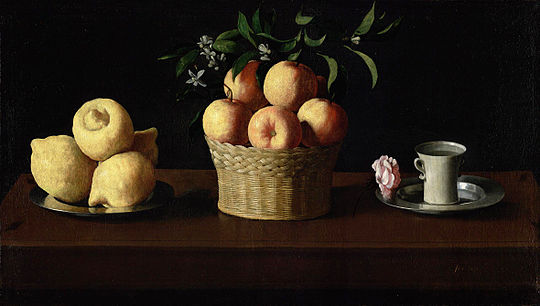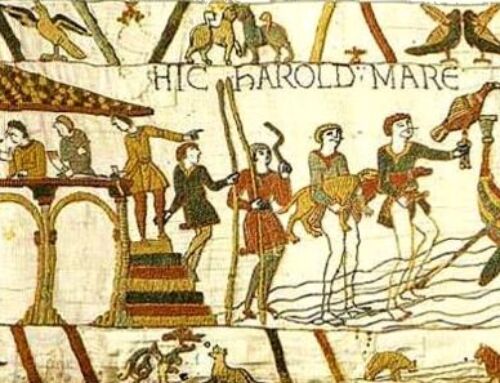Sometimes an experience of beauty strikes at the very core of our beings. In silence and attention, we receive it through our senses and feel its effect on us deep within our emotions. Our minds then recognize that this simple experience is a doorway, or a sacred window, into a deeper realm of beauty, truth, and goodness – and fullness of life.
So it is with the power of truly great music like the motet written by American composer, Morten Lauridsen in 1994 called, O magnum mysterium. It is a blessedly beautiful five minutes of wonder and grace that is perfect for delving deeply into the “grand mystery” we celebrate on the feast of Christ’s Birth. The very life of God.
As I noted in another piece about a Renaissance motet:
The Renaissance was not the age of virtuoso singers such as England would see in the Baroque era 150-200 years later (Handel’s oratorio, The Messiah, is a perfect example of this). Renaissance church music was still essentially choral music, the production of a community of human voices.
And Mr. Lauridsen has perfectly captured the spirit of that genre of music in his work of wonder: the interweaving of men’s and women’s voices into an integrated, wonderfully lucid experience of beauty is truly marvelous.
The inspiration behind this motet
Touring the Norton Simon Museum in Pasadena sometime in the early ’90s, Mr. Lauridsen came upon a still-life painting by the Baroque artist, Francisco de Zurburán (painted in 1633 AD), featuring two groups of fruits, oranges and lemons, set in three-fold arrangement with a rose next to a cup.
It’s the simplest of all presentations, so one might wonder how this painting inspired a work of music. Although an entirely different genre of art, Lauridsen said that his soul was so mesmerized by the stark beauty and symbolism of the scene, that the inspiration for the music was planted. First, here is the picture.

Like any work of genius, the image is simple but layered with meaning. An artistic eye like Lauridsen’s would have immediately grasped the messages the artist worked so subtly into this scene four hundred years ago:
- Three perfectly balanced groups of objects reflect the life of the Trinity,
- Especially as the three together form a pyramidal arrangement, a wide triangle,
- With the table forming a kind of altar for the presentation of the life-giving or life-nurturing substances.
Lauridsen understood that the simple objects of the painting were a reference to the Incarnation of Christ and analogously, to Our Lady who is intimately associated with that Mystery. He later wrote: “The objects in this work are symbolic offerings to the Virgin Mary. Her love, purity and chastity are signified by the rose and the cup of water. The lemons are an Easter fruit that, along with the oranges with blossoms, indicate renewed life. The table is a symbolic altar.”
A classic work of visual art thus inspired another classic work of choral art that took the form of this magnificent motet. Lauridsen recreated the three-fold balanced structure of the painting by giving his music three movements or parts that are distinct but take a discerning ear to notice. One part flows so seamlessly into the other that it seems to have no structure at all.
Three-fold structure
I’m imposing my interpretation on this piece because I don’t believe Lauridsen himself ever described this dynamic, but I believe the three-fold structure becomes a kind of mirror of the Trinitarian life of Our Lady – her Joyful, Sorrowful, and Glorious Mysteries. The Joy is certainly found in every moment of the vocal performance. It exudes out of the music, and although the words are different, you can almost hear an echo of Our Lady singing her Magnificat: “My soul proclaims the greatness of the Lord / My spirit rejoices in God my Savior” (Luke 1:46).
One note you will certainly not miss comes upon the listener in the very center of the piece. It is the lone dissonant note (very brief and repeated once) that Lauridsen deliberately programmed into the piece as an expression of Mary’s Sorrow at the future suffering of her Son. That is the mark of a master craftsman. He can program a negative-sounding note into his overall work and make it ripe with meaning! It is resonant of the Sorrowful Mysteries of Our Lady’s life reflected in music.
The conclusion rouses us with its gorgeous “Alleluia!” repeated by all voices to draw all listeners into the Easter Gloria sensation of Our Lady’s and Her Son’s victory over sin and death. The Alleluia! has the effect of resonating in the soul as much as it would resonate off the walls of a chapel.
I am including here the Latin lyrics of the motet (with English translation), which are not original to Lauridsen. He would be the first to admit that he stands within the long and illustrious choral tradition of the Church and so draws his inspiration and much material from this flowing river of grace. The lyrics come from a traditional poem recited to Our Lady in the Morning Prayer of Christmas.
It is a perfect Christmas gift for us on the Feast of Our Lord’s Birth.
Lyrics
O magnum mysterium,
et admirabile sacramentum,
ut animalia viderent Dominum natum,
iacentem in praesepio!
Beata Virgo, cujus viscera
meruerunt portare
Dominum Iesum Christum.
Alleluia!
O great mystery,
And wondrous sacrament,
That animals should see the new-
born Lord, lying in their manger!
Blessed is the Virgin whose womb
was worthy to bear the
Lord Jesus Christ. Alleluia!
Performance(s)
If you have time to listen to only one, listen (and watch) the first because it adds a beautiful slideshow of images to the music. They are from the creators of the video, not Lauridsen, but I’m particularly fond of the way they worked in images of life in the womb at the end, which will truly inspire you on this great feast of Christmas!
The Dale Warland Singers (5:45)
From “Kings College Christmas” (6:25)

Soul Work
Only Christ has a total claim on our souls. He is the Alpha and the Omega, the Beginning and the End. He gives us our very lives, and He receives them back at the end of our earthly journey.
They key for each of us in the here-and-now is deciding what we will do with the lives we’ve been given. The Blessed Virgin Mary shows us a model of one who gave every measure of her entire existence back to God in her total commitment to the Person of Jesus Christ.
It’s not enough to say that Mary would naturally give herself to Christ because He was her Son. It important to realize that Mary also worshipped the Lord with every aspect of her being and served Him with unrelenting devotion. Together with Joseph on the day of His Birth, they are there with the angels, the shepherds, and even the humble animals, rapt in worship of the newborn King.
At Christmas, whether at Mass or in a silent moment, re-commit your total being to Christ in a very personal way like Our Lady and with Our Lady.
A blessed Christmas to you and yours!




Leave A Comment